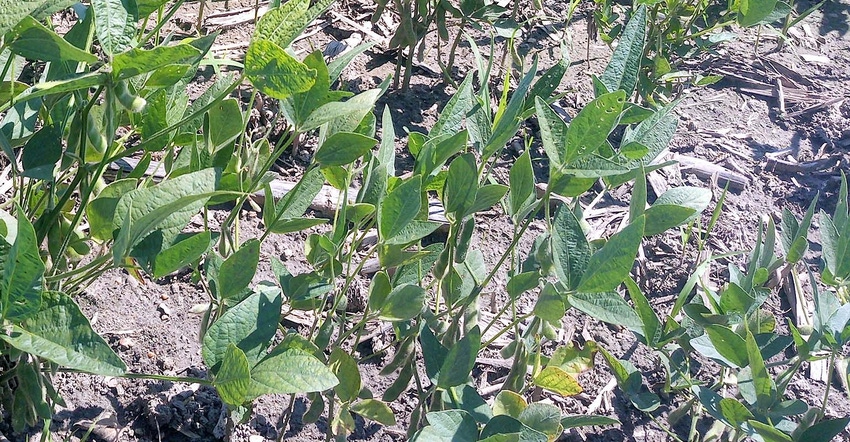August 24, 2018

If you live nearby our farm in northern Indiana, you may have noticed some of our fields have ugly soybeans. Shortly after very good soybean emergence, we noticed issues with some soybeans. Plants were stunted, not growing well, and just plain sickly looking. I almost attributed the issues to planting time frame, but then we noticed ‘normal’ beans in the same field.
Upon further investigation, we found about a quarter of our bean acres had this problem. The affected fields were all planted with the same trait. In those fields, when a specific high rate seed treatment was used, the effect was magnified. The roots of these plants were not normal. They were more fibrous. They lacked nodulation.
We called the seed company. They sent agronomists and reps. Soil and tissue samples were pulled and sent for inspection. Soil nutrient and plant tissue results were returned within a few days. Soybean cyst nematode samples came back relatively quickly as well.
Soil tests, which were looking for chemical carryover, took more than two weeks to get back. Most of this process was repeated twice. So, to say this process has been dragging out is an understatement.
To this day, some of the plants are not over eight inches tall. Some died. Some plants appear more normal, but there are still plants that seem like they were never affected. We wonder if those plants are a different variety, or maybe didn’t get the same dose of seed treatment. Because of the slow soybean growth, weed control has been difficult as well.
It seems we will not be getting an academic answer. Nobody really knows. Though carryover was a suspect, the soil tests came back clean. The soil nutrient and tissue tests were also normal. Cyst tests didn’t return any off the chart counts.
Our unproven theory
In house, we have a theory, but it is all anecdotal. It is our opinion that this trait (maybe more specifically the varieties we planted) have sensitivity to one of the residual chemistries we used. That sensitivity was then magnified by the way the seed treatment works in the plant roots to make them tougher. We have learned that some seed companies screen or rate the varieties for the specific chemical sensitivity. None of our non-gmo fields had this issue, and we used higher rates of the chemicals in those fields.
I had delayed blogging on this topic in hopes for some answers, but I’ve resolved there will likely be none. Going forward, we will have to revisit our chemistry and seed trait selection. I don’t know which one will win out. Consistent performance is a key to our operation. If you think you have an answer, let us know.
The opinions of the author are not necessarily those of Farm Futures or Farm Progress.
About the Author(s)
You May Also Like






